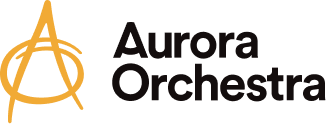Folk Roots
23 October 2019

Folk songs, field recordings and lying down immersed in music. Aurora Leader Maia Cabeza chats with us about what to expect for Folk Roots, the Lock-In she’s curated and will perform in next Saturday (2 November 9.15pm, Kings Place).
Kodály once said, ‘A good folk song is a perfect masterpiece in itself.’ Can you tell us more about how folk music threads through this concert?
He’s right! In this Lock-In we explore how Central and Eastern European folk music influenced specific composers of the 20th century. We’ll hear original field recordings of folk songs juxtaposed with chamber music by Kodály and Bartók. I’ll also perform solo violin works by Schulhoff and Enescu, two composers whose musical language was similarly shaped by contact with folk music.
Folk Roots sounds intimate and atmospheric. What can the audience expect when they enter the space?
People can expect to experience the music up close in whatever way feels best to them! Whether that means lying down on cushions in the dark, moving with the music, just sipping a drink, or all three, you have the freedom to listen to this concert in any way you choose.
Bartók’s Rhapsody No. 2 is a beautiful mixture of the delicate and the fierce, and draws on the sounds of bagpipe drones, folk fiddling and dance melodies from across Hungary and Romania. How does it feel to prepare and perform this piece?
The Rhapsody No. 2 is a wonderful example of Bartók’s ability to construct a piece which is mostly a collection of folk tunes and transform it into a work with his distinctive compositional voice. It is written extremely virtuosically for both instruments, so I would say preparing and performing this piece requires plenty of practice and a bit of luck!
By all accounts Czech composer Erwin Schulhoff was a fascinating character: a surrealist, Dadaist, communist and self-declared fan of ‘nightclub dancing’. Can you tell us a bit more about his 1927 Sonata for Solo Violin?
Schulhoff was indeed an incredible man and versatile composer, and one whose life was tragically cut short by the Nazi regime. His musical works range vastly in style, from jazz-infused music to neo-baroque forms and humorous, absurdist pieces. His solo violin sonata was written in a period where he was exploring folk music, and we hear the influence immediately. The employment of driving dance rhythms, percussive pizzicatos and the Lydian mode all recall Eastern European folk music.
If you found yourself in possession of an Edison wax cylinder phonograph (or indeed just an iPhone 7) and a month off, where would you most like to travel in the world for some musical adventures of your own?
This is a difficult question, as there are so many interesting options! One of the places at the top of my list is India. I’ve never had the chance to travel there and would love to experience and explore the country’s amazing musical traditions.
Folk Roots
Sat 2 November 9.15pm
Hall Two, Kings Place
Kodály Duo
Schulhoff Sonata for Solo Violin
Enescu Airs in Romanian Folk Style
Bartók Rhapsody No. 2
The Lock-In is our exploratory late-night series curated by Aurora Principal Players. Each intimate and informal performance takes you on a journey of musical discovery across diverse genres and art forms. Expect eclectic musical encounters that unfold in new and surprising ways.
